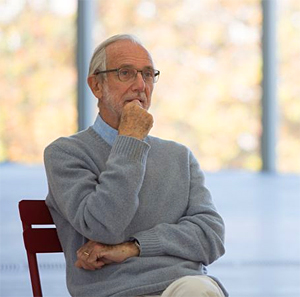
Renzo Piano offered to design a new bridge in Genoa
 |
The Genoa-born Piano has already designed a new appearance for a two-kilometer stretch of the waterfront in the city. "We gratefully accepted the offer of help, and (Piano) has already come up with some proposals," said the governor of the Liguria region, Giovanni Toti, about the architect's involvement in the construction of the new bridge.
According to the 80-year-old architect, the bridge should be built "soon, but not in haste" and with regard to the "true nature and characteristics of the Genoese." On the day the bridge collapsed, Piano had a meeting in Genoa and since then he reportedly hasn't thought of anything else.
According to Italian media, the architect delivered sketches to the city officials of Genoa, where the roadway rests on pillars shaped like a ship's bow. Another significant feature of Piano's design is 43 tall masts - one for each victim, whose night lighting will resemble sails, wrote the newspaper Corriere della Sera.
On the list of works by the Genoa native is, for example, the Kansai International Airport terminal in Osaka, Japan, from 1994, or the Science and Technology Center in Amsterdam, Netherlands (1997), which resembles the bow of a gigantic tilted ship, as well as the dreamlike buildings of the Jean-Marie Tjibaou Cultural Centre in New Caledonia in Nouméa (1998).
In 2007, his fifty-two-story skyscraper The New York Times was completed in New York. For London, Piano designed the distinctive pointed building London Bridge Town Skyscraper, nicknamed The Shard, completed in 2013.
It is still unclear who will oversee the construction of the new bridge. The Italian government accuses the bridge operator, Autostrade per l'Italia, of inadequate investment in the maintenance of the bridge.
The Italian Ministry of Transport has proposed that the operator pay for the new bridge, but leave the construction to the government. The company's executive board has already allocated 500 million euros (12.9 billion CZK) for construction, compensation for the victims' families, and for those who lost their homes due to the collapse of the structure. The government is considering awarding the construction to the state-controlled company Fincatieri.
Responsibility for the bridge's collapse is under investigation. Today, the newspaper La Stampa reported that among the documents secured by prosecutors during the investigation is a report from the bridge's creator, Riccardo Morandi, from the 1980s. The architect states that the ninth pillar, which collapsed on August 14, and particularly its suspension system, are in worse condition than expected.
He attributed this to external factors, such as the marine environment that accelerated corrosion. In the 37-year-old report, the bridge's creator warned that the structure could collapse. The report was requested from the architect by Autostrade per l'Italia, which was still state-owned at that time.
The English translation is powered by AI tool. Switch to Czech to view the original text source.
0 comments
add comment
Related articles
0
29.04.2020 | In Janov, the complete replacement of the collapsed highway bridge is already standing
0
22.11.2019 | The operator of the Žižkov Bridge knew about the risk as early as 2014
0
12.08.2019 | The collapse of the bridge in Genoa claimed 43 human lives a year ago
0
02.07.2019 | The Italian prosecutor's office has released the video of the collapse of the Genoa bridge for the first time
0
14.05.2019 | The company with possible ties to the mafia was excluded from the reconstruction of the bridge in Genoa
0
14.01.2019 | Autostrade agrees to pay for the reconstruction of the Genoa bridge
0
12.11.2018 | The demolition of the remaining part of the Janov bridge will begin in a month, according to the mayor
0
09.11.2018 | Due to the bridge collapse in Genoa, companies suffered damages of 422 million euros
0
26.09.2018 | <translation>Commission: The operator of the bridge in Genoa did not ensure its safety</translation>
0
07.09.2018 | New bridge in Janov to be designed by Piano, the state should approve next year
0
07.09.2018 | The operators of the Genoa bridge are being investigated for manslaughter
0
06.09.2018 | The German studio developed a 3D model of how the bridge in Genoa collapsed
0
31.08.2018 | Most in Italian Genoa will start to be demolished within a month
0
13.09.2017 | Italian architect Renzo Piano will celebrate his eightieth birthday












